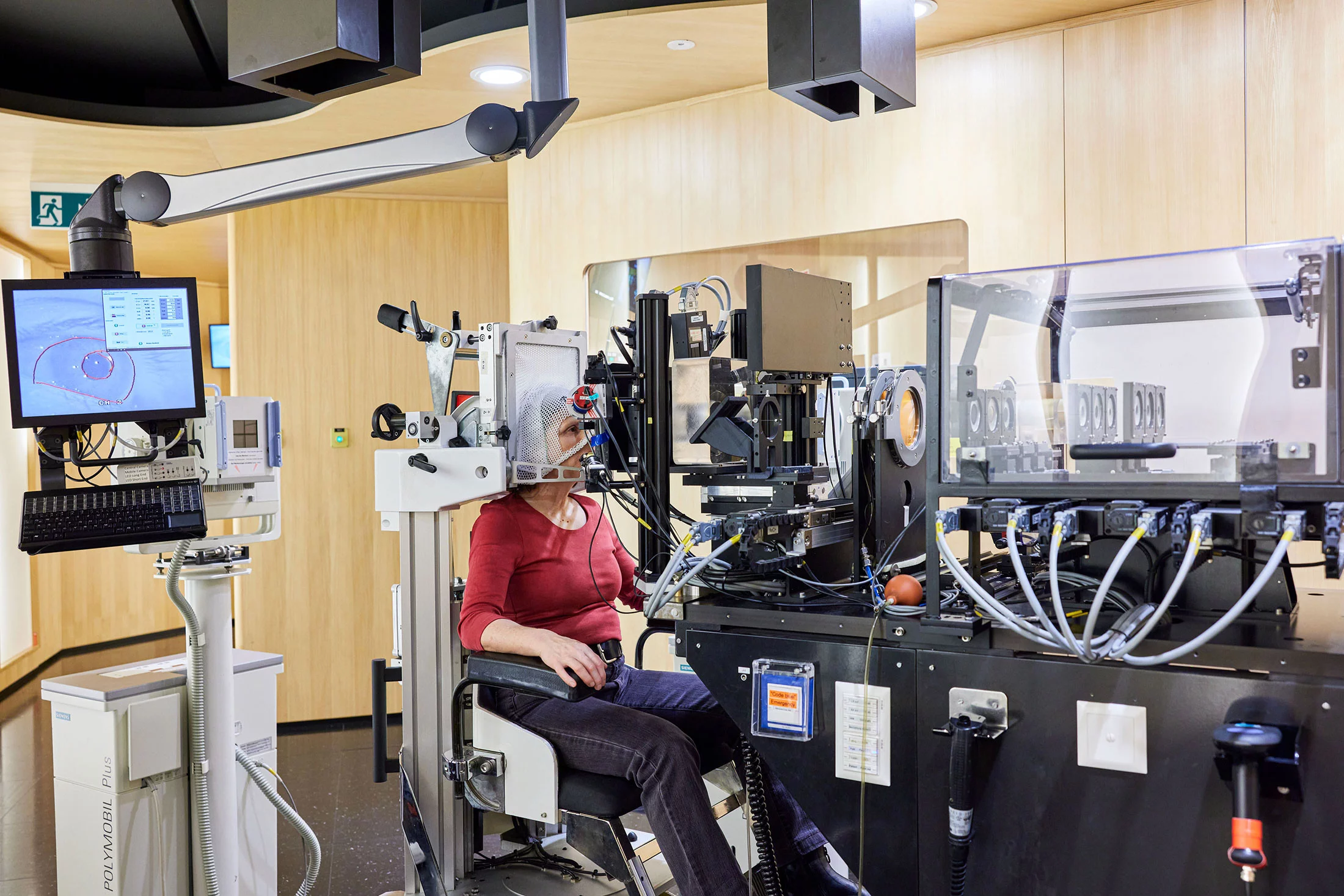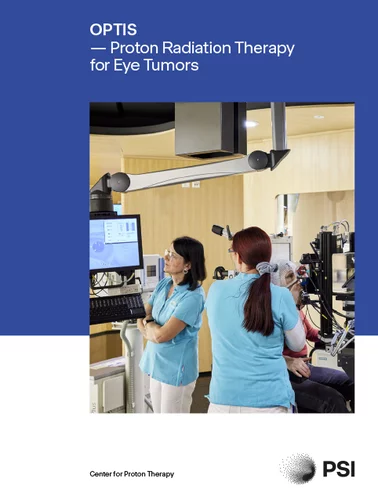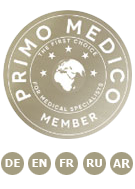OPTIS is the facility dedicated for treatment of ocular tumors at PSI. It has a fixed horizontal beam line. Instead of moving with a beam around patient, the optimal direction for the beam to enter into patient is achieved by moving and rotating with patient in front of the fixed beam.
In order to achieve short treatment times (~1 minute), a double-scattering process was applied in OPTIS nozzle to ensure high efficiency of transport of 70 MeV proton beam. The range shifter set the range and ensures pre-scattering of proton pencil beam. In the next step, the beam passes through a scatter foil which broadens the beam and ensures homogeneous field at the isocentric plane. OPTIS uses in total 9 scatter foils, each dedicated to a specific interval of ranges. Spread-out Bragg peak (SOBP) is realized using dedicated modulator wheels. OPTIS can deliver a homogeneous circular field of maximal 35 mm diameter. However, this field is reduced for each patient, using individually milled cupper collimator aperture.
Achieved dose distribution is characterized by a steep distal and lateral fall-off. On average, the lateral and distal penumbras are 1.4 mm and 1.5 mm, respectively. OPTIS allows precise delivery of the requested range (2SD = 0.13 mm) and dose in the SOBP (2SD = 1.9%).
For an accurate patient positioning in respect to the treatment beam, OPTIS areal is equipped with two x-rays units aligned with the treatment isocenter providing orthogonal imaging of patient’s eye. Patient is seated in a treatment chair facing the nozzle with his head immobilized using individual mask and bite block. The chair is mounted on a hexapod robot allowing a 6-degrees-of-freedom positioning of patient. Position of an eye (gazing angle) is defined through the fixation light – a small LED lamp that can be placed to any point in the proximity of the nozzle and the patient must fixe the light with his eye. Intrafractional motion of patient eye is monitored using compact surveillance cameras.


